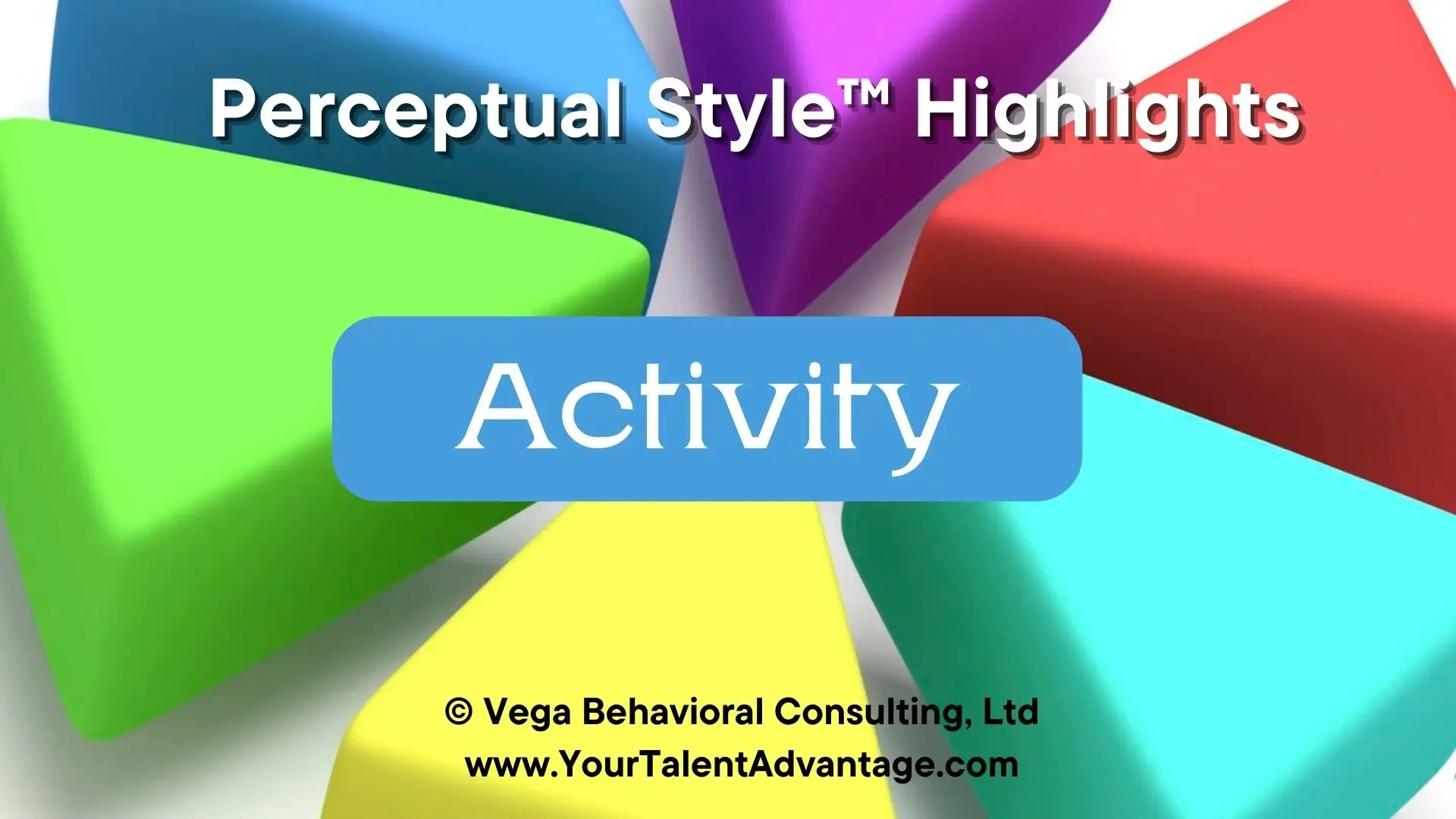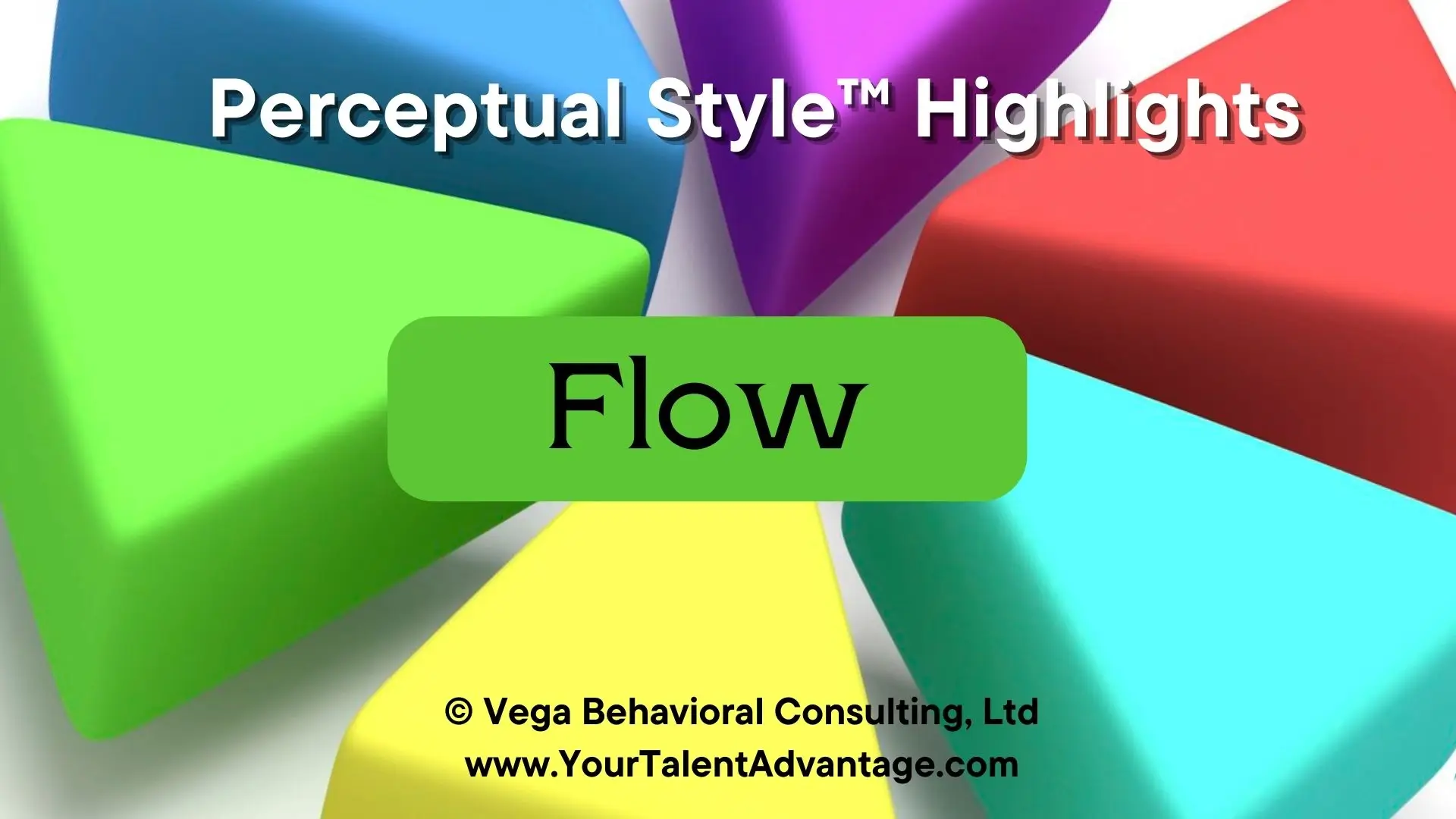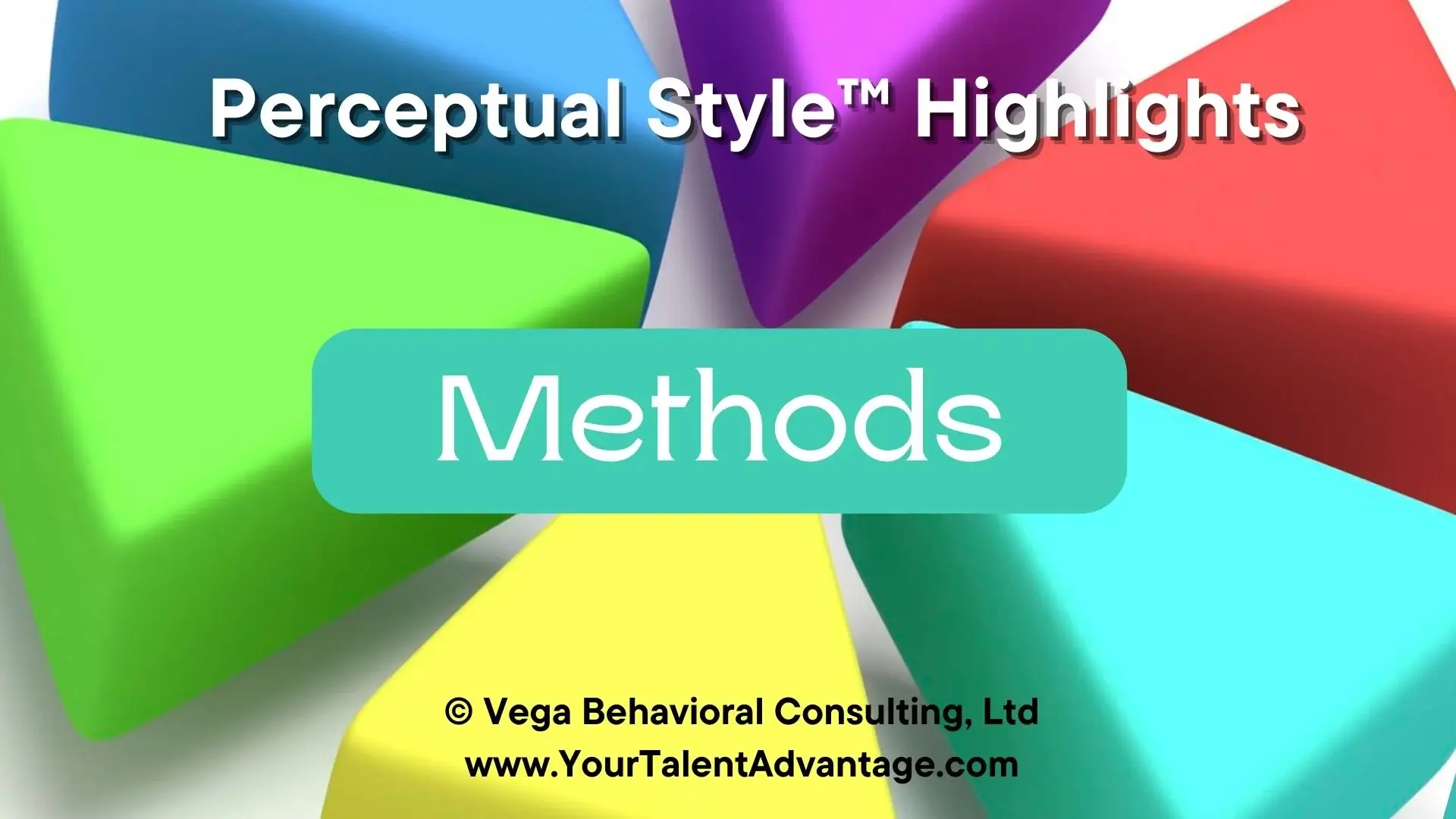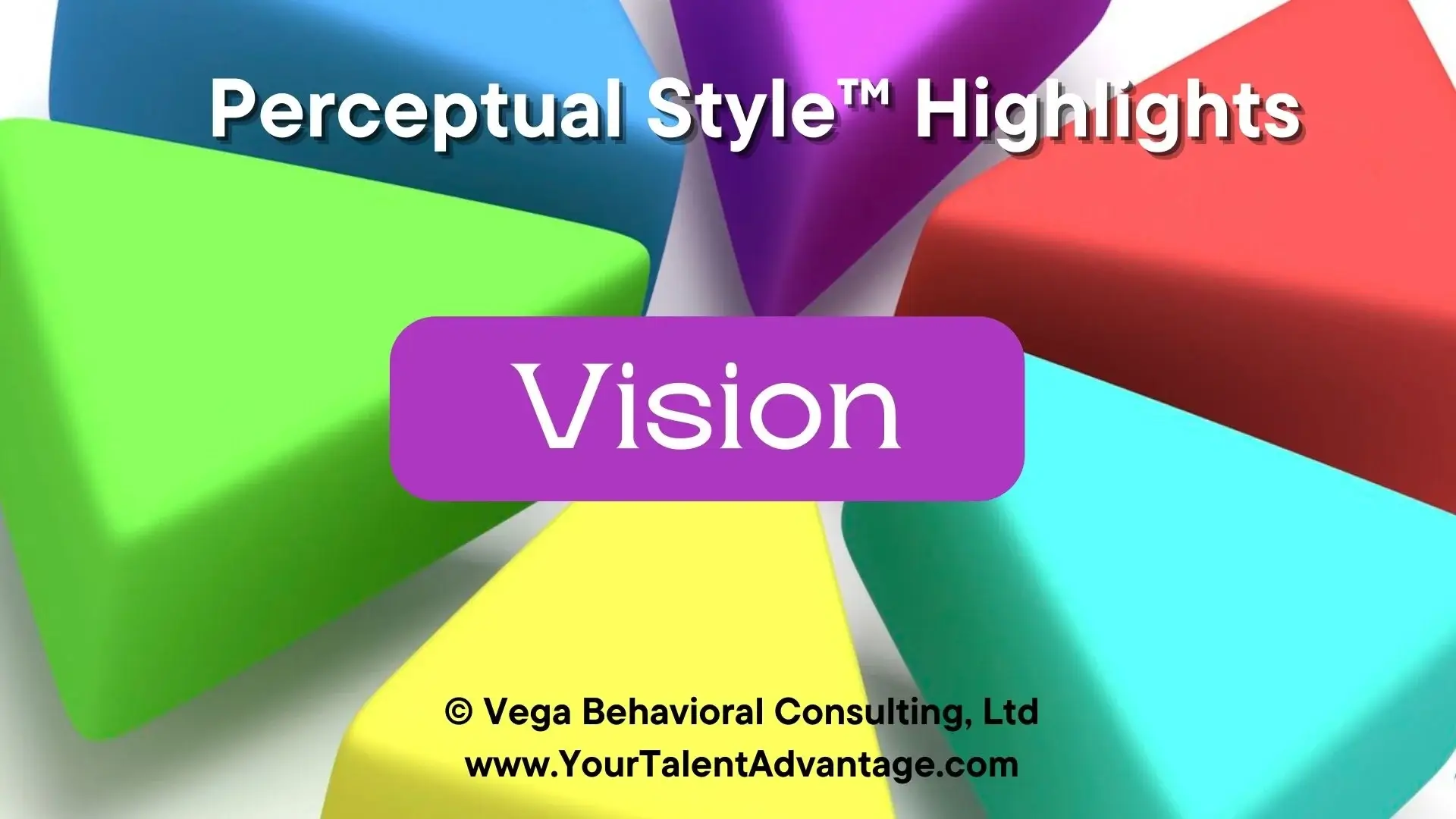
Goals Perceptual Style™ and Conflict
How You Handle Conflict and Resolve It Fast
Conflict is part of life — and how you respond can either clear the path forward or create more roadblocks. Disagreements show up everywhere: in meetings, family plans, partnerships, and daily decisions. Some are direct and fiery, others linger beneath the surface. But every conflict, big or small, presents a choice — to power through, step back, or face it with focus and purpose.
That's where your Perceptual Stylecomes in. It shapes how you assess tension, what you believe needs to happen next, and how you respond under pressure. If your style is Goals,you bring a direct, results-oriented approach. You don’t get stuck in the problem — you aim for a solution and keep everyone moving forward.

Why Understanding Conflict Matters
Conflict isn’t just about differing opinions — it’s about how we communicate, stay aligned, and work through challenges together. When handled with clarity and purpose, conflict can become a turning point for growth and stronger connection.
When approached effectively, conflict can:
Drive progress by challenging assumptions and clearing the path forward.
Build trust through honest, direct conversations.
Strengthen commitment by working through tension without losing focus.
Uncover practical solutions by confronting issues head-on.
When conflict is poorly managed, it can create frustration, stall momentum, and damage relationships. But when you understand your Goals Perceptual Style,you gain the self-awareness to respond with focus and intention — transforming friction into shared understanding and progress.
How Goals People Experience Conflict
With the Goals Perceptual Style,for you conflict isn’t just a disruption — it’s a challenge that demands action. You see disagreements as something to resolve, not avoid, and you’re wired to focus on outcomes. When tension arises, your instinct is to cut through the noise, clarify what matters, and move forward.
You thrive when you can:
-
Confront issues directly and decisively, without getting sidetracked by drama.
-
Stay calm and composed, even when emotions run high.
-
Focus on solutions that restore direction and shared purpose.
-
Push through resistance with determination and a clear sense of priorities.
But here’s the thing: when conflict drags on, gets overly emotional, or lacks structure, it can leave you frustrated. You need clarity, focus, and progress — not circular conversations or unresolved tension.


Why Understanding Your Perceptual Style Matters
Your approach to conflict is a strength — direct, determined, and focused on results. But without awareness of how your style plays out under pressure, you may push too hard, miss emotional cues, or prioritize resolution at the expense of connection.
When you understand your Goals Perceptual Style,you can:
-
Navigate conflict with clarity, purpose, and steady resolve.
-
Stay focused on outcomes while making space for other perspectives.
-
Address tension in a way that builds trust and shared direction.
-
Channel your drive for resolution into collaboration, not just completion.
Awareness allows you to stay true to your priorities — and still create shared success through productive resolution.
Take Action: Discover Your Perceptual Style
Stop letting conflict derail your momentum — and start using it as a catalyst for clarity, connection, and meaningful progress. The
The Perceptual Style Assessment™reveals how you naturally respond under pressure — and gives you practical tools to resolve conflict with focus, direction, and confidence.
When you complete the assessment, you’ll receive:
-
A 45-page Celebrate You!action guide tailored to the Goals Perceptual Style.
-
Insights into your conflict-resolution strengths and how to apply them effectively.
-
Tools to navigate tough conversations with clarity, purpose, and forward momentum.
Don’t wait — unlock your power to take charge of conflict and turn it into progress you can count on.

Explore the Six Perceptual Styles and Conflict
Curious about how different Perceptual Stylesapproach conflict? Explore below for insights into each unique style:
Understanding your style is just the beginning. Recognizing how others experience conflict empowers you to turn tension into trust, disagreement into dialogue, and challenges into lasting solutions.
Frequently Asked Questions about the Goals Perceptual Style and Conflict
What does it mean to have the Goals Perceptual Style™?
You see life as a series of objectives waiting to be met. You thrive on clear direction, bold action, and measurable results. You quickly identify what matters most today and move with purpose toward solutions that create progress.
What are some of the natural strengths of Goals
You bring clarity and momentum wherever you go. You cut through confusion, set priorities, and motivate others with your drive and decisiveness. You spot what’s essential, act with confidence, and move people and projects from uncertainty to completion.
How does the Goals style show up in Conflict?
You face conflict head-on. You respect strength in others but believe resolution comes through decisive action and clear outcomes.
What are a few common blind spots—and how can I manage them?
Your fast thinking and quick action can leave others feeling rushed or unheard. A quick check — “Before we move, anything I’m missing?” — keeps people aligned without slowing you down. Your focus on the right solution can unintentionally dismiss feelings, so acknowledging shared goals helps maintain trust. And because once you “get it,” you’re ready to move on, try “Give me the bottom line” instead of cutting someone short — you’ll still get clarity fast without shutting them down.
How can understanding my Goals strengths help me thrive?
Knowing your Perceptual Style helps you channel your natural intensity where it counts. You can set short-term goals that build lasting success, balance drive with patience when others move more slowly, and celebrate progress without losing sight of the bigger picture. Awareness helps you turn determination into direction — and results into meaning.
Can my Perceptual Style change over time?
No — your Perceptual Style is innate. What evolves is how you apply it. As your self-awareness grows, you’ll refine how you use your natural strengths and direct your energy for greater impact.





